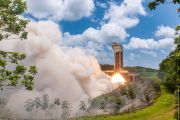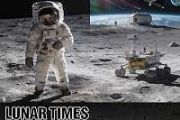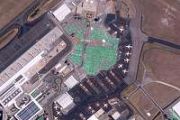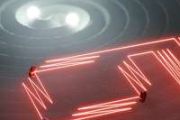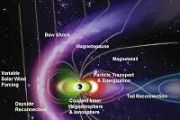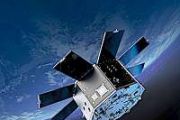
Copernical Team
Satellites for quantum communications
 How can it be ensured that data transmitted through the internet can be read only by the intended recipient? At present our data are encrypted with mathematical methods that rely on the idea that the factorization of large numbers is a difficult task. With the increasing power of quantum computers, however, these mathematical codes will probably no longer be secure in the future.
Tobias Vo
How can it be ensured that data transmitted through the internet can be read only by the intended recipient? At present our data are encrypted with mathematical methods that rely on the idea that the factorization of large numbers is a difficult task. With the increasing power of quantum computers, however, these mathematical codes will probably no longer be secure in the future.
Tobias Vo Study shows bed rest simulating space affects human gene rhythms
 A study by the University of Surrey has revealed that simulated microgravity conditions, akin to those experienced by astronauts, cause disruptions in the natural rhythms of gene expression in humans. This simulation was achieved through 60 days of bed rest, providing insights into the molecular changes that occur in space.
The study underscores the effects of microgravity on human physiol
A study by the University of Surrey has revealed that simulated microgravity conditions, akin to those experienced by astronauts, cause disruptions in the natural rhythms of gene expression in humans. This simulation was achieved through 60 days of bed rest, providing insights into the molecular changes that occur in space.
The study underscores the effects of microgravity on human physiol NASA industry team advances Lidar technology for Earth and Lunar missions
 This summer, NASA engineers will embark on airborne tests of innovative laser technologies designed for Earth science and potentially enhancing lunar exploration models. These instruments, based on light detection and ranging (lidar) technology, promise to refine the accuracy of models depicting the Moon's topography and identify suitable landing areas for the Artemis missions.
Lidars, whi
This summer, NASA engineers will embark on airborne tests of innovative laser technologies designed for Earth science and potentially enhancing lunar exploration models. These instruments, based on light detection and ranging (lidar) technology, promise to refine the accuracy of models depicting the Moon's topography and identify suitable landing areas for the Artemis missions.
Lidars, whi Kayhan Space revolutionizes university space programs with Pathfinder Classroom
 In a significant move to enhance spaceflight safety and education, Kayhan Space has announced the launch of its Pathfinder Classroom, a pioneering space traffic coordination (STC) platform. Designed for university space programs, this platform enables autonomous assessment of satellite conjunctions and collision avoidance, addressing the urgent need for space situational awareness in the face of
In a significant move to enhance spaceflight safety and education, Kayhan Space has announced the launch of its Pathfinder Classroom, a pioneering space traffic coordination (STC) platform. Designed for university space programs, this platform enables autonomous assessment of satellite conjunctions and collision avoidance, addressing the urgent need for space situational awareness in the face of Intelsat bolsters global connectivity through enhanced Eutelsat Group Partnership
 In a strategic move to boost its global connectivity solutions, Intelsat today announced the expansion of its partnership with Eutelsat Group, focusing on the integration of Eutelsat's OneWeb low-earth orbit (LEO) constellation into Intelsat's offerings. This development signifies a major leap forward in multi-orbit satellite connectivity, propelling Intelsat to lead in the evolution of global c
In a strategic move to boost its global connectivity solutions, Intelsat today announced the expansion of its partnership with Eutelsat Group, focusing on the integration of Eutelsat's OneWeb low-earth orbit (LEO) constellation into Intelsat's offerings. This development signifies a major leap forward in multi-orbit satellite connectivity, propelling Intelsat to lead in the evolution of global c Genesis and LEO-PNT: Pioneering the future of precision navigation
 In a significant leap forward for global satellite navigation, the European Space Agency (ESA) has announced the launch of two groundbreaking missions, Genesis and LEO-PNT, under its FutureNAV programme. With a total investment of euro 233 million, these missions are poised to elevate Europe's stature in the satellite navigation arena, catering to the burgeoning demand for more resilient and pr
In a significant leap forward for global satellite navigation, the European Space Agency (ESA) has announced the launch of two groundbreaking missions, Genesis and LEO-PNT, under its FutureNAV programme. With a total investment of euro 233 million, these missions are poised to elevate Europe's stature in the satellite navigation arena, catering to the burgeoning demand for more resilient and pr Antaris and Aalyria unite for satellite network simulations
 Space mission software developer Antaris, has announced a collaboration with Aalyria to meld Aalyria's Spacetime network orchestration technology with Antaris's TrueTwin simulation platform. This union is poised to revolutionize satellite constellation simulations by enabling high-fidelity operations at scale.
Spacetime, a cutting-edge SaaS platform, orchestrates expansive, dynamic communi
Space mission software developer Antaris, has announced a collaboration with Aalyria to meld Aalyria's Spacetime network orchestration technology with Antaris's TrueTwin simulation platform. This union is poised to revolutionize satellite constellation simulations by enabling high-fidelity operations at scale.
Spacetime, a cutting-edge SaaS platform, orchestrates expansive, dynamic communi GITAI's robotic system triumphs in ISS demo
 GITAI USA Inc. reports the completion of its technological demonstration, which involved a 1.5-meter-long autonomous dual robotic arm system (S2) performing tasks outside the International Space Station (ISS). This demonstration represents a critical advancement in on-orbit satellite servicing, demonstrating capabilities critical for satellite maintenance, repair, and assembly in space.
Th
GITAI USA Inc. reports the completion of its technological demonstration, which involved a 1.5-meter-long autonomous dual robotic arm system (S2) performing tasks outside the International Space Station (ISS). This demonstration represents a critical advancement in on-orbit satellite servicing, demonstrating capabilities critical for satellite maintenance, repair, and assembly in space.
Th Clemson study tightens the noose on Dark Matter's mysteries
 In a breakthrough study, Clemson University's postdoctoral fellow Alex McDaniel has advanced our understanding of dark matter, potentially edging scientists closer to unraveling one of the universe's most perplexing enigmas. Dark matter, which does not interact with electromagnetic forces and thus remains invisible to our current observational tools, constitutes approximately 85% of the universe
In a breakthrough study, Clemson University's postdoctoral fellow Alex McDaniel has advanced our understanding of dark matter, potentially edging scientists closer to unraveling one of the universe's most perplexing enigmas. Dark matter, which does not interact with electromagnetic forces and thus remains invisible to our current observational tools, constitutes approximately 85% of the universe Northrop Grumman advances Lunar Rail concept
 Northrop Grumman Corporation (NYSE: NOC) has embarked on a mission to design a lunar rail system. Commissioned by the Defense Advanced Research Projects Agency (DARPA), this project forms a part of the ambitious LunA-10 Capability Study, which seeks over the next ten years to lay the groundwork for a robust space economy through international collaboration. The proposed rail network aims to revo
Northrop Grumman Corporation (NYSE: NOC) has embarked on a mission to design a lunar rail system. Commissioned by the Defense Advanced Research Projects Agency (DARPA), this project forms a part of the ambitious LunA-10 Capability Study, which seeks over the next ten years to lay the groundwork for a robust space economy through international collaboration. The proposed rail network aims to revo 











